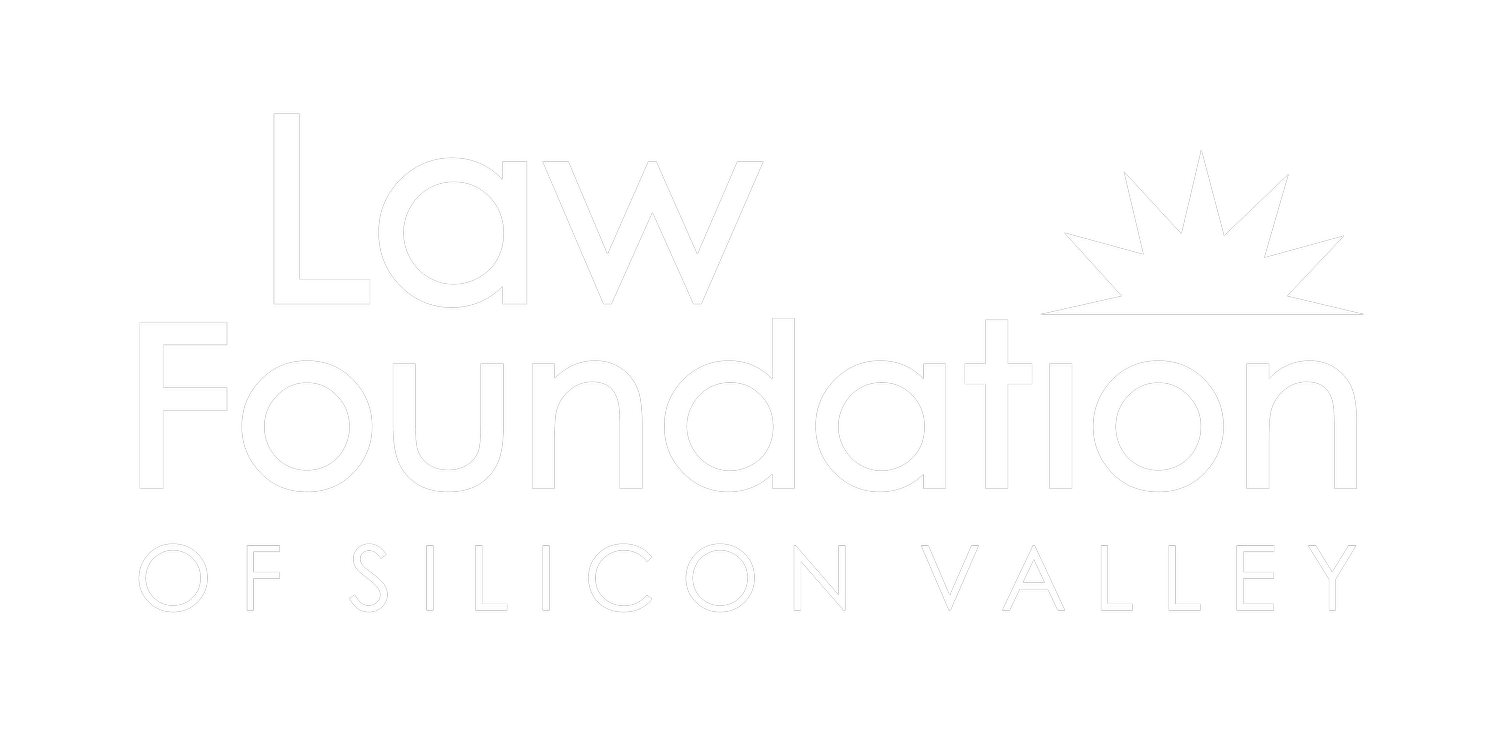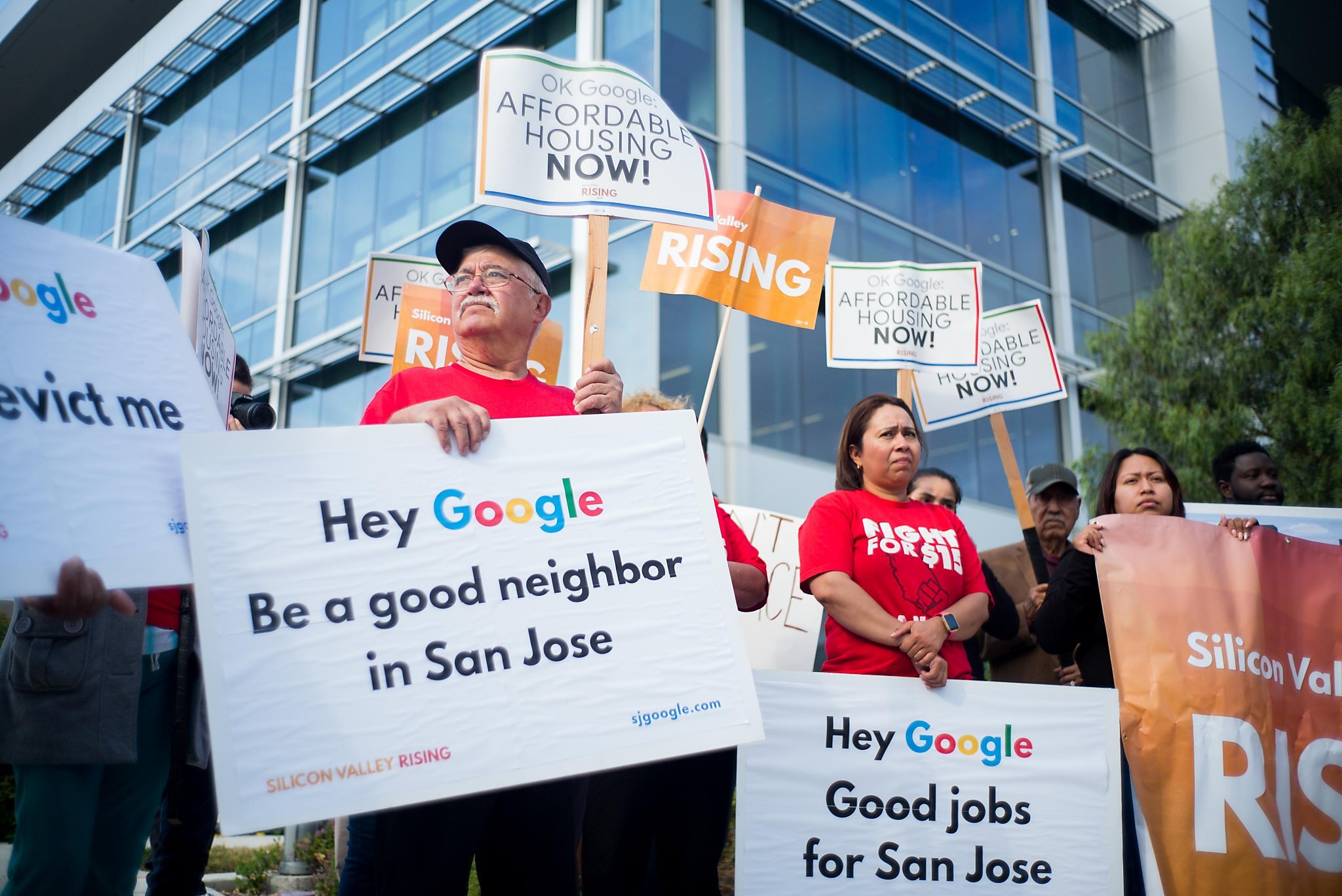July 23, 2021
Alejandro Reyes
Director, Program Legal Group
Office for Civil Rights
Potomac Center Plaza (PCP)
550 12th Street SW
Washington, D.C. 20024
Docket ID ED-2021-OCR-0068
Submitted electronically via https://www.regulations.gov/
Attention: Request for Information Regarding the Nondiscriminatory Administration of School Discipline, ED-2021-OCR-0068
I. Introduction
The Law Foundation of Silicon Valley submits this comment in response to the U.S. Department of Education Office for Civil Rights’ (OCR) Request for Information Regarding the Nondiscriminatory Administration of School Discipline, Docket ID ED–2021–OCR–0068.
The Law Foundation of Silicon Valley is a legal services non-profit that advances the rights of historically excluded individuals and families through legal services, strategic advocacy, and educational outreach. Through litigation, community and movement lawyering, and legislative advocacy, our Health Program serves communities who are historically excluded from health systems including Black, Indigenous, Latinx, Asian American Pacific Islander (AAPI), other people of color, LGBTQIA individuals and people experiencing homelessness and unhoused individuals with a focus on health equity for all. Our Children & Youth program (Legal Advocates for Children & Youth or LACY) advances the legal rights of children and youth, empowering them to lead healthy and productive lives.
Both the Health Program and the Children & Youth (LACY) programs incorporate community and movement lawyering along with grassroots advocacy to help our clients based on our direct legal services work. This includes recognizing that many systems play a role in health equity and social determinants of health, including schools, jails and prisons, law enforcement, and systems that impact the likelihood that a person, including young people, experiences health inequity. Health’s advocacy regarding young people includes intersections with carceral systems, environmental and social determinants of health impacts, and advocacy on behalf of young people with disabilities. LACY’s direct services in the area of education include representation on matters regarding the Individuals with Disabilities Education Act and Section 504, OCR complaints, school discipline, and school suspensions and expulsions.
The past Administration rescinded several key guidance letters, particularly regarding school discipline and other issues that disparately impact historically excluded student groups. That decision along with the lack of true investigation into OCR complaints has negatively impacted students’ health and well-being. Indeed, many civil rights complaints include students with disabilities, with Black students disproportionately impacted by the decisions that local educational agencies (LEA) make. Data collection, restorative practices in discipline, and clear guidance from OCR are vital for parents, students, and LEAs to understand the rights of students most impacted.
II. Background regarding the impact of student discipline on historically excluded students
At all ages, students of color are far more likely to experience disciplinary actions compared to their white classmates. This race disparity is present at the preschool age.1 In preschools, Black girls experience 53% of female suspensions even though they make up only 19% of female preschool enrollment.
Implicit bias contributes to the race disparities in school discipline. At preschools, educators scrutinize the behavior of Black children more than they do their white peers.2 In one eye-tracking study by Yale University, educators spent more time watching and monitoring Black children even though they were a much smaller percentage of the school than white students.
Harsh discipline against preschoolers leads to devastating outcomes later in life. Children who are suspended or expelled as preschoolers are more likely to be expelled, to drop out, and to be incarcerated.3
Throughout the education system, school discipline practices, including suspensions and expulsions, adversely impact children of color. Compared to white students, Black and Latinx students are far more likely to be removed from school as punishment.4 Black students are four times more likely to be suspended from school than their white classmates, and more than twice as likely to be referred to law enforcement or arrested.5 Further, students of color are more likely to face harsh surveillance practices such as metal detectors, security cameras, random sweeps, and school police.6
During this pandemic, research shows that Black, Indigenous, and other people of color (BIPOC) individuals are disproportionately impacted and have higher health risks.7 In addition, students have been asked in some cases to maintain attendance and a remote learning environment despite not receiving the resources they need from local educational agencies. These issues are compounded when students live in rural communities.8 Disproportionate disciplinary practices continue to hurt children of color in virtual classrooms. In Sacramento, Audrey, a nine-year-old Black girl was “virtually suspended” and forced to leave her Zoom classroom.9 She was denied access to email and was traumatized.
Children of color with mental health needs are especially vulnerable to school discipline. In schools, Black and Latinx children are less likely to receive mental health treatment than their white peers even though they have similar rates of mental illness.10 After a major depressive episode, youth of color are less likely to receive adequate care than white children.11 Mental health conditions affect how children interact and learn at school.12 Unmet mental health needs may manifest as emotional outbursts, tantrums, and behavioral challenges. Childhood trauma is associated with increased suspensions and expulsions.13
Instead of treating and helping children of color with mental health problems, schools punish and incarcerate them.14 Latinx students are more likely than whites to attend a school that has a law enforcement officer but no school counselor.15
Schools also disproportionately punish students with disabilities. Students with disabilities are twice as likely to be suspended from school than non-disabled classmates.16 A third of K-12 students with emotional disabilities, such as anxiety, faced at least once out-of school suspension.17
Schools must consider alternatives to discipline when responding to students with mental health problems. Instead of disciplinary referrals or expulsions, schools should fund and prioritize school-based counseling, mental health programs, and crisis intervention teams that include providers, counselors, social workers, and child welfare specialists. Educators also need training in cultural competency, anti-racism, and responding to children with trauma.
III. School Discipline Recommendations
a. New guidance regarding achieving equity
Stigmatizing suspended students is pointless. Most suspended students have disabilities, are young people of color, have had adverse childhood experiences (“ACEs”), or are otherwise marginalized. We recommend clear guidance on alternatives to traditional, harsh student discipline. We urge OCR to issue guidance in the following five areas.
First, OCR should issue guidance on investigating complaints and monitoring resolutions. Whenever OCR receives a plausible complaint, it should promptly open a formal investigation.18 When OCR opens such an investigation, it should interview complaining students and their parents. OCR must make clear that when an investigation starts, it will be carried out in a timely manner. OCR should ensure that that interviews of stakeholders are part of the investigation. Moreover, OCR should update the materials given to parents and students regarding what to expect once an investigation opens. If a complaint results in a resolution agreement, OCR should monitor that agreement until its terms are fulfilled. And OCR should give complainants an opportunity to appeal adverse decisions.19 Finally, OCR should make good use of public information by conducting more compliance reviews.
Second, OCR should reframe the public debate by issuing guidance centered on safety, civil rights, restorative justice, and educational equity. The “quest for equity in schooling is intricately entwined with school climate.”20 OCR should encourage states to end disciplinary practices that harm, exclude, push-out, abuse, and traumatize children—practices that disproportionally criminalize students of color and students with disabilities. OCR should help districts and schools implement policies and practices that “allow students form positive and trusting relationships with trained and knowledgeable adults that are supportive of their complex needs[ ] and encourage the use of evidence-based strategies to promote positive behavior.”21 OCR should accomplish this by creating a new narrative centered on safety, civil rights, restorative justice, and educational equity—and by providing the regulatory and nonregulatory resources necessary for achieving those goals.
Third, OCR should issue guidance on collecting robust, nuanced data on policing. That guidance should ensure that the Civil Rights Data Collection (CRDC) consistently collects and publishes data on, among other things, encounters between students and police officers and the types of minor offenses that lead to traumatic and unnecessary police contacts. OCR should also ensure that CRDC practices and publications clearly define dress code violations and referrals to law enforcement. Finally, OCR should disaggregate student data by race, income, ethnicity, disability, gender identity, sexual orientation, and whether the student is learning the English language.
Fourth, OCR should issue guidance on supporting students with language barriers. Each student learning English should have an equitable and individualized learning plan. Each student’s progress should be tracked in a database monitored by the school district. Schools should hire teachers and administrators who not only understand childhood development, but also are culturally competent and sensitive—particularly to the needs of students learning English. Finally, OCR should ensure that schools are complying with school desegregation orders, even in remote learning environments.
Fifth, OCR should issue guidance on addressing the needs of homeless students.22 Homeless and unhoused students, many of them unaccompanied minors, will continue to struggle with the ever-changing rules of remote learning. During school closures, they will disproportionately lack access to alternative meals, remote learning technology, and reliable adult supervision. Although the Department of Education has issued guidance on homeless students during the Covid-19 pandemic, new variants continue to demonstrate the urgency of prioritizing homeless students. Homeless students face complex, evolving challenges that require schools to continuously adapt. OCR should continue to collect data and issue guidance on the needs of unhoused students, including technological needs—mobile hotspots, computer devices, and applications that respect student privacy.
b. Removal of seclusion and mechanical and chemical restraints
OCR should issue guidance prohibiting schools from using seclusion, mechanical restraints, and chemical restraints. Seclusion and restraints are disproportionately used on children with disabilities and children of color.23 In schools, children with disabilities are four times more likely to be physically restrained and secluded than their non-disabled classmates.24 Seclusion and restraints are dangerous.
OCR defines seclusion as the “involuntary confinement of a student alone in a room or area from which the student is physically prevented from leaving.”25 Seclusion is not the same as time-out, which is designed for calming the child. Children in seclusion suffer. In some schools, seclusion rooms are the size of closets and have no chairs to sit on or windows.26 In 2008, Jonathan King, a 13-year-old boy hanged himself in a seclusion room where he was placed for “misbehaving.” Recently, some states have passed legislation prohibiting or restricting the use of seclusion in their school districts.27
Physical and chemical restraints also hurt children. OCR has defined physical restraint as “a personal restriction that immobilizes or reduces the ability of a student to move his or her torso, arms, legs, or head freely.28 Physical restraints can include zip ties, handcuffs, and straitjackets. Chemical restraints involve using antipsychotic medication to control children’s behavior or restrict their movement. Restraints can cause serious psychological and physical harm.29 Even when schools apply physical restraints correctly, they can lead to harmful physical conditions such as asphyxiation, oxygen deprivation, broken bones, and death.30
Children have a right to be treated with dignity and to be free of harmful and abusive practices like seclusion and restraint. Instead of using harsh restraints and seclusion, schools should promote access to counseling, mental health care, and programs that reinforce positive behavior.
c. Prohibition of physical restraints by staff altogether unless necessary
In general, the Law Foundation does not support police in schools. Law enforcement in schools, including school resource officers and other policing staff, disproportionately target students of color, contributing to the school-to-prison pipeline. Compared to their white peers, children of color are more likely to go to a school with a police officer, are more likely to be referred to law enforcement, and are more likely to be arrested at school.31
When community response teams or staff need additional support for students, we oppose the use of restraints. Forceful restraints involving handcuffs and police contact can traumatize children. In the last two decades, 20 children have died from restraints in schools, churches, and health facilities.32
Students with disabilities are 75% of students physically restrained at school and make up 25% of students arrested and referred to police.33 Schools should prioritize de-escalation and crisis intervention programs instead of referring school disciplinary matters to law enforcement.
OCR also needs to reform its data tracking to ensure that schools provide comprehensive data on the use of restraints and the circumstances leading to restraints.
d. Fully monitoring Equity in IDEA and 504 and access to FAPE
School districts are required by law to create a welcoming environment for all students and for students with disabilities. This includes free appropriate public education (FAPE) along with an individualized education program (IEP) or 504 Plan that is tailored to their needs.34 While in theory the IEP or the 504 Plan serves as the primary vehicle to provide children with promised FAPE, without additional monitoring, students have few means to hold school districts accountable to this need.35
In the height of the pandemic, students were forced to pivot to remote learning. This pivot was especially difficult for historically excluded student groups such as students with disabilities, particularly Black and Latinx students with disabilities. This shift has left them with few remedies to obtain the resources they need for FAPE. Without additional guidance, students with disabilities will continue to receive the brunt of discretionary decisions that define FAPE during remote learning.
The Department of Education should make clear that to better assist the student, 1:1 behavior paraprofessionals on their IEPs/504 Plans must have access to remote paraprofessional support during remote instruction. It should also ensure that paraprofessionals receive training from their school district—training created with the help of parents, community members, and trained consultants. Over a year later, these issues continue to harm students. We ask for clear guidance regarding FAPE.
Additionally, guidance for school discipline about students with disabilities must keep in mind the ways that IEPs can be used to ensure that students with disabilities have access to restorative justice and freedom from seclusion and restraints. And this guidance must ensure that students with disabilities avoid additional barriers to restorative justice practices—practices that must replace the use of harmful discipline.
e. Prioritize and direct resources to public schools regarding social, emotional, and academic success
School counselors, psychologists, social workers, and nurses provide essential health and mental health services. For many students, school resources represent the only access they have to these essential services. Students, particularly students of color, have been asking for holistic wellness options and additional mental health and counselor services long before the pandemic, and such resources are now more important than ever. These services are important in ensuring that students can show up fully as themselves without risking discipline. Wellness services should be culturally competent and readily available, and OCR should continue to issue guidance on the importance of these services. OCR should ensure that it prioritizes its plan to provide resources and funding for social, emotional, and academic success, particularly considering the current mental health crisis.
As schools start to return to in-person and hybrid learning environments, OCR should offer guidance on the need for medical care for students who exhibit flu-like symptoms but lack access to other healthcare. For example, LEAs should ensure that mental health staff reach out directly to students and families and provide a variety of ways for students to request individualized assistance. They should also conduct online and in-person needs assessments to identify students and families that need additional services. These assessments are critical to student success, equity, and removing disciplinary actions when other resources are needed. LEAs should also broadly promote its services through traditional media, social media, email, and robocalls. And LEAs must provide remote academic counseling for all students in a manner that prioritizes equity for academic success. OCR could make clear that without a focus on these services, it will likely disproportionately impact historically excluded student groups, such as Black students.
The Law Foundation appreciates the opportunity to comment on Nondiscriminatory Administration of School Discipline. We strongly urge OCR to truly focus on the equity of student success—a focus that centers historically excluded student populations.
Sincerely
Abre’ Conner Asha Albuquerque Jeremy Chen Patti Massey
Directing Attorney, Staff Attorney, Health Staff Attorney, Education Rights
Health Program Program Health Program Attorney, Children
& Youth Program






















